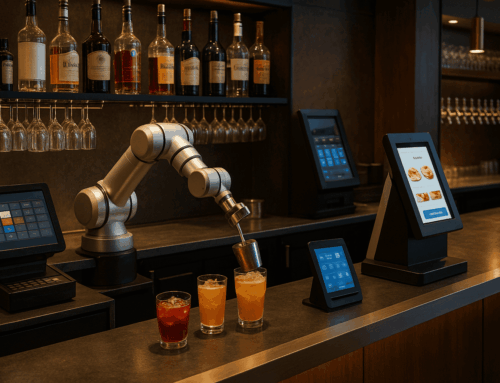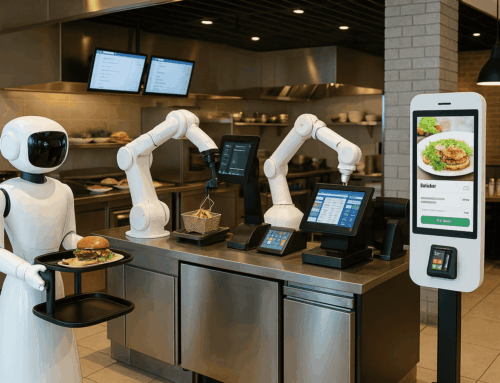Introduction: In the dynamic realm of point of sale (POS) systems, Square has emerged as a prominent player, offering versatile solutions catering to various business domains. Understanding the intricacies of Square POS Pricing is crucial for businesses contemplating its adoption. This article provides a comprehensive exploration of Square POS System costs, encompassing hardware, software, support, one-time expenses, ongoing charges, and potential hidden costs.
Payment Processing Model: Square adopts a transparent flat-rate payment processing model, simplifying transactions for businesses. The following outlines the payment processing fees associated with Square’s POS system:
- In-person transactions: 2.6% plus 10 cents (Free plan) or 2.5% plus 10 cents (Plus plan).
- Online transactions: 2.9% plus 30 cents.
- Manually keyed transactions or card-on-file invoices: 3.5% plus 15 cents.
- Hardware Cost: Square offers a range of hardware options to complement its POS software. The hardware cost can vary based on the business requirements. Common hardware components include:
- Square Terminal: A standalone device for credit card transactions.
- Square Register: An all-in-one POS system with built-in hardware.
- Card Readers: Compatible with smartphones and tablets, enabling mobile transactions.
- Printers, Cash Drawers, and Barcode Scanners: Additional peripherals that enhance functionality.
Hardware costs typically range from $199 for Square Terminal to $799 and beyond for Square Register, depending on specifications and features
Square offers a range of hardware options to enhance its POS software. Detailed hardware costs include:
- $0 for Square magstripe-only card reader ($10 for each additional reader) or Tap to Pay for iPhone (iPhone not included).
- $49 and up for Square Reader contactless and chip card reader.
- $149 for Square Stand iPad POS or Square Stand Mount (iPad not included).
- $299 for Square Terminal mobile card reader with a built-in printer.
- $799 for Square Register two-screen system.
- Software Cost: Square’s software is known for its user-friendly interface and customizable features. The software cost is generally transparent, with Square adopting a pricing model based on transaction volume. Key aspects include:
- Transaction Fees: Square charges a percentage of each transaction, typically around 2.6% + 10¢ for in-person transactions.
- Online Transactions: For e-commerce, the fee may vary, often around 2.9% + 30¢ per transaction.
- Subscription Plans: Square may offer subscription plans with additional features, such as Square for Restaurants or Square Appointments, each with its pricing structure.
Understanding your business’s transaction volume is crucial to estimate software costs and overall Square Retail POS Pricing accurately.
- Support Cost: Square provides customer support through various channels, including email, phone, and an extensive knowledge base. Support costs are generally included in the overall pricing structure. However, businesses may opt for premium support plans or additional services:
- Premium Support Plans: These may offer faster response times and priority access to support agents.
- On-Site Support: Available for larger enterprises with specific needs, this may incur additional costs.
Standard support is often included, but additional services may come at an extra charge. For businesses relying on the free version, Square’s customer support is available via phone from 6 a.m. to 6 p.m. Pacific time, Monday to Friday.
- One-time Cost: Square POS systems generally involve minimal one-time costs. However, there are instances where businesses might incur additional charges:
- Hardware Setup: If professional installation or setup assistance is required, there may be associated fees.
- Data Migration: Transferring existing data to Square’s system may involve one-time costs.
While Square aims for simplicity in pricing, businesses should be aware of potential one-time expenses.
- Ongoing Cost: Ongoing costs primarily revolve around transaction fees and any subscription plans. It’s essential for businesses to regularly evaluate their transaction volume and adjust their subscription plans accordingly. Considerations include:
- Scaling: As businesses grow, transaction volumes may increase, impacting ongoing costs.
- Additional Features: Some advanced features may incur additional charges, necessitating a periodic review of the software’s utility.
Monthly Fees: Understanding Square’s monthly subscription fees is vital for businesses seeking tailored solutions. The breakdown includes:
- $0 for Square POS, Restaurant, Retail, and Appointments Free plans.
- $29 for Square Appointments Plus plan.
- $60 for Square Restaurant Plus plan.
- $69 for Square Appointments Premium plan.
- $89 for Square Retail Plus plan.
- Custom pricing for Square Retail and Restaurant Premium plans.
Regularly reassessing your business needs ensures ongoing Square POS Pricing costs remain optimized.
- Hidden Costs: While Square is known for its transparent pricing, businesses should be aware of potential hidden costs that could impact the overall budget:
- Integration Costs: Third-party integrations may require additional payments.
- Customization Expenses: Tailoring the system to unique business needs may incur costs.
- Upgrade Costs: Future system upgrades or migrations may involve additional expenses.
Vigilance and clear communication with Square representatives can help businesses uncover and manage potential hidden costs.
Contract Length: Square provides flexibility with no contractual obligations. Businesses can upgrade, downgrade, or cancel at any time without penalties, allowing for adaptability to evolving needs.
Conclusion: Square’s POS system offers businesses a flexible and accessible solution, but understanding the nuances of its cost structure is paramount. By dissecting the hardware, software, support, one-time, ongoing, and potential hidden costs, businesses can make informed decisions about implementing Square’s POS system. Regular evaluations and open communication with Square representatives will empower businesses to optimize their POS system costs and drive efficiency in their operations.






